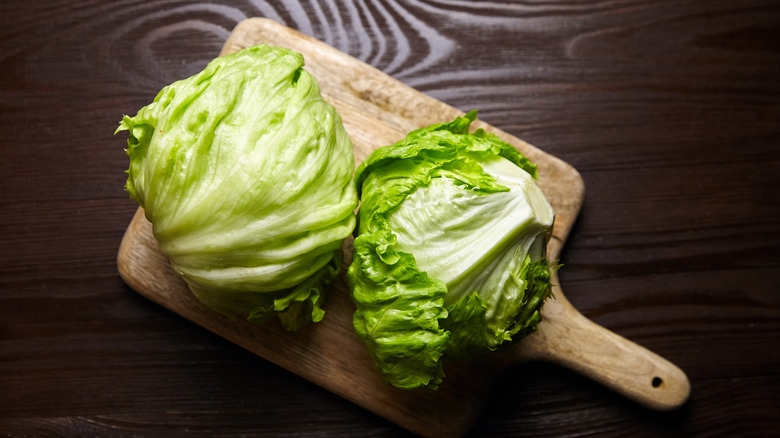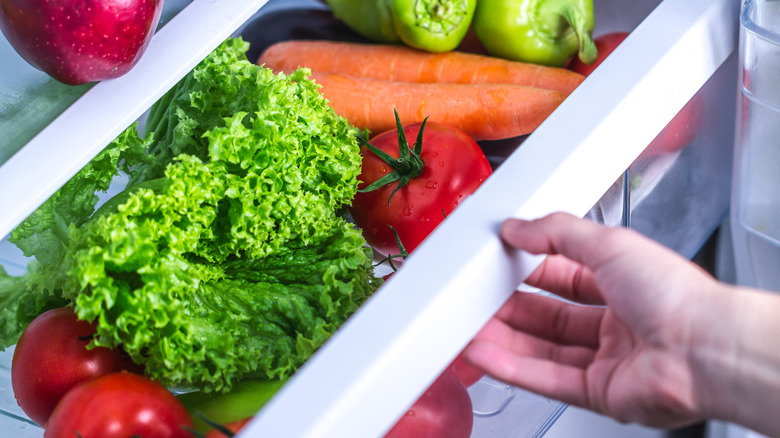Here's Why Your Lettuce Is Turning Red
If you tend to eat a lot of leafy greens, you probably already know that lettuce comes in a few different colors. From vibrant greens to light pinks to deep reds, lettuce doesn't only come in that pale shade you may be accustomed to seeing in your wedge salad or deli sandwich. Of course, this isn't the case for regular iceberg or romaine lettuce that has turned red in the fridge.
According to Garden.eco, this redness isn't a naturally-occurring pigment, but rather a result of prolonged exposure to oxygen, and is usually a sign of deterioration. What happens is that when your lettuce leaves are cut or damaged their cell walls allow in oxygen. This then releases an enzyme within the plant that results in the production of those red compounds. Lettuce is also susceptible to reddening because of how it reacts with ethylene gas. All fruits and vegetables emit ethylene gas as they ripen, but lettuce has a higher sensitivity to it, which results in that unappealing red hue.
How to prevent lettuce from turning red
Though oxidation is a natural part of the lifecycle of a plant, the reddening that occurs isn't exactly a great sign, because after reddening comes wilting. Thrive Cuisine confirms that reddened lettuce, however, is still safe to eat. The enzymes present during this stage present no harm whatsoever to your digestive system, but the lettuce will have lost a good amount of its flavor and nutritional value. Plus, it's not exactly visually appetizing.
To prevent lettuce from turning red, Thrive Cuisine recommends keeping it away from fruits and vegetables that emit high levels of ethylene, such as tomatoes, avocados, bananas, or produce in the process of ripening. Storing lettuce in an airtight container is also ideal, as it minimizes oxidation, thereby prolonging its shelf life. If your lettuce has already turned red, there's not much else you can do aside from eat it before it wilts, but otherwise, the process of reddening can be easily controlled.

